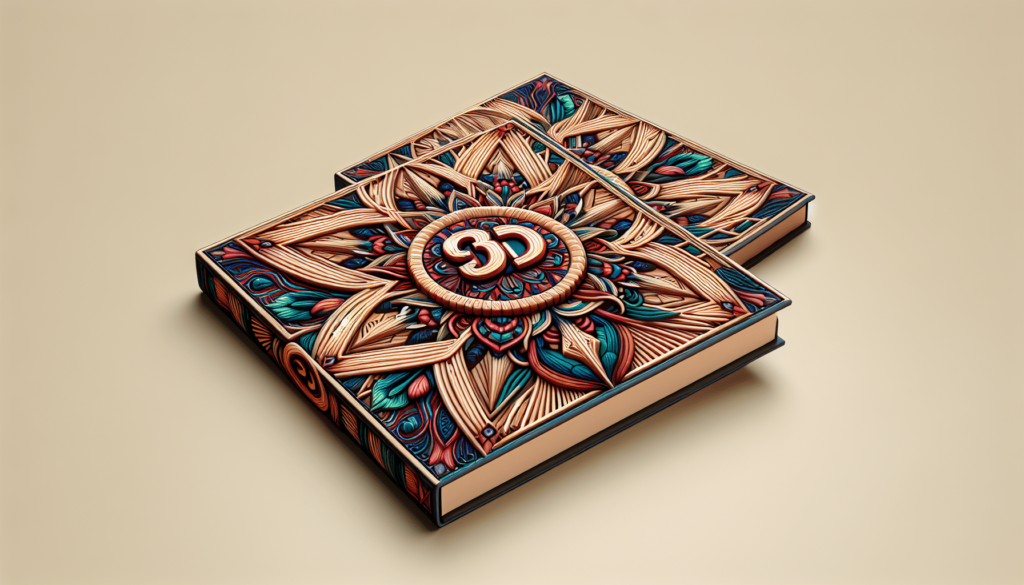Creating 3D book covers that grab readers’ attention and leave a lasting impression becomes a breeze with the Nexus AI Infinity Suite. Packed with innovative tools like the Nexus Title Architect, Nexus Description Strategist, and Nexus Cover Curator, this suite empowers self-published authors with the means to elevate their work’s presentation. By employing advanced AI technology, these tools generate SEO-optimized titles, craft engaging book descriptions, and design eye-catching covers, all tailored to stand out in a competitive market. Whether you’re a novice or a seasoned writer, the user-friendly design and automation features of Author Nexus AI ensure you can save time and unleash your creativity, making your journey in self-publishing smoother and more successful. Have you ever wondered how you can design 3D book covers that truly stand out and captivate readers? In the vast world of self-publishing, a book cover isn’t just a protective layer for your literary work – it’s a powerful marketing tool designed to grab the attention of potential readers and make a compelling first impression.
In this guide, we’ll discuss the crucial elements that go into creating an exceptional 3D book cover, the benefits of using advanced tools like the Nexus Cover Curator, and practical tips to ensure your cover not only attracts readers but also resonates with them. So, let’s dive in and explore how you can master the art of 3D book cover design!
Understanding the Importance of a Remarkable Book Cover
The First Impression Matters
Your book cover is often the first interaction a potential reader has with your book. A striking, well-designed cover can spark curiosity and entice readers to explore further. On the flip side, a poorly designed cover can deter potential readers, regardless of how engaging the content inside might be. It’s essential to recognize that your book cover is a visual sales pitch.
Conveying the Genre and Tone
A good book cover should accurately represent the genre and tone of your book. Whether it’s a thrilling mystery, a heartwarming romance, or an insightful non-fiction work, the cover needs to communicate what readers can expect inside. This alignment helps attract the right audience and sets appropriate expectations.
Enhancing Professionalism and Credibility
Self-published authors might face skepticism regarding the quality of their work. A professionally designed 3D book cover can alleviate these concerns, projecting a sense of credibility and dedication to your craft. It’s an investment in your book’s perceived value.
Elements of a Standout 3D Book Cover
Striking Visuals
Vivid imagery and compelling graphics are foundational to a standout book cover. High-quality images or illustrations that are visually appealing and tightly related to your content can make a significant difference.
Clear and Impactful Typography
The choice of fonts and how text is presented on your cover plays a crucial role in its effectiveness. Your title and author’s name should be legible, even in thumbnail images used online. Opt for fonts that reflect the book’s theme and ensure they are large enough to be read comfortably.
Cohesive Color Schemes
Colors evoke emotions and can significantly influence a reader’s perception. Warm colors might evoke feelings of excitement or warmth, while cool colors can convey calmness or professionalism. Select a color scheme that aligns with the mood and genre of your book.
Strategic Layout
A balanced and thoughtfully arranged layout ensures that all elements of your cover work harmoniously. Key elements such as the title, subtitle, and central imagery should be strategically placed to guide the viewer’s eye naturally across the cover without causing clutter.
3D Effects
Adding 3D effects to your book cover can provide a sense of depth and realism, making it more engaging. Elements like shadows, gradients, and reflections can be used to make your cover visually appealing and more dynamic.

Leveraging AI-powered Tools for Cover Design
Introduction to Nexus Cover Curator
The Nexus Cover Curator is an AI-powered tool designed to simplify and enhance the book cover design process for self-published authors. It supports the creation of professional-grade 3D book covers by leveraging advanced algorithms and design principles.
Benefits of Using AI Tools
AI tools like the Nexus Cover Curator can save you time and effort by generating high-quality cover designs with minimal manual input. They can analyze market trends, suggest optimal designs, and even provide variations to suit different genres and tones. Here’s why incorporating AI could be transformative:
Time Efficiency
AI tools significantly reduce the time needed to design a cover by automating various steps, such as layout creation, font selection, and color matching.
Cost-Effectiveness
Hiring a professional designer can be expensive. AI tools offer an affordable alternative while maintaining high quality.
Personalization
AI tools can tailor designs to match your specific preferences and the book’s content, enhancing the personal touch and relevance of the cover.
How to Use Nexus Cover Curator
To get started with the Nexus Cover Curator, follow these steps:
- Upload Your Manuscript Details: Input the title, author name, subtitle (if any), and genre.
- Select Design Preferences: Choose your preferred color scheme, imagery style (photographic, illustrative, abstract), and typography.
- Review Generated Designs: The AI will generate multiple cover options based on your preferences. Review these designs to select the best fit.
- Customize Further if Needed: Use the customization options to tweak elements like font size, image placement, or color combinations.
- Finalize and Export: Save the final design and export in the required formats (e.g., print-ready, e-book thumbnail).
Practical Tips for Designing Your Own 3D Cover
Research Your Genre
Before diving into design, spend time researching the covers of bestselling books in your genre. Note common elements, color schemes, and typography choices. This research will provide insights into what works well within your niche.
Keep it Simple but Effective
Overcomplicating your cover with too many elements can distract and confuse potential readers. Aim for a design that is clean, eye-catching, and conveys the core message effectively.
Seek Feedback
Gathering feedback from others can provide valuable insights. Share your cover designs with a select group of people, such as fellow authors, friends, or beta readers, and consider their input for refinements.
Pay Attention to Details
Small details can make a big difference. Ensure there are no spelling errors, the text is legible, and the imagery is high resolution and not pixelated.
Test Thumbnail Sizes
With the rise of digital book sales, your cover will often be viewed as a small thumbnail. Ensure your cover remains appealing and readable even at smaller sizes.
Incorporate Brand Elements
If you’re planning a series or already have an author brand, ensure your cover reflects these elements. Consistent branding helps build recognition and loyalty among your readers.

Common Mistakes to Avoid
Using Low-Quality Images
Low-resolution images can make your cover look unprofessional. Always use high-quality images that remain crisp and clear even when scaled.
Cluttered Design
Too much information or too many elements can clutter your design. Focus on a few key components that convey your message effectively without overwhelming the viewer.
Overly Complex Fonts
While decorative fonts can add character, they can also make your cover hard to read. Stick to fonts that are stylish yet legible and appropriate for your genre.
Ignoring Market Trends
While standing out is important, ignoring current market trends can make your book seem out of place. Balance originality with familiarity, ensuring the cover is relevant to contemporary readers.
Forgetting the Back Cover
If you’re producing a print book, don’t neglect the back cover. Ensure it complements the front and includes essential elements like a brief blurb, author bio, and ISBN.
Examples of Exceptional 3D Book Covers
To help you get inspired, here are a few examples of 3D book covers that excel in different aspects:
| Book Title | Genre | Key Elements |
|---|---|---|
| The Future We Choose | Non-fiction | Clean typography, vivid images, contemporary design |
| The Alchemist | Fiction | Simple yet powerful imagery, symbolic elements |
| Atomic Habits | Self-help | Bold typography, minimalist design |
| Murder on the Orient Express | Mystery/Thriller | Vintage feel, detailed illustrations, genre-appropriate |
Examining these examples, you can see how each cover uses specific design strategies tailored to their genre and target reader.
Conclusion
Creating a 3D book cover that stands out and captivates readers is a blend of art and strategy. By focusing on critical elements like striking visuals, clear typography, cohesive color schemes, and utilizing tools like the Nexus Cover Curator, you can significantly enhance your book’s marketability. Remember, your cover is more than just a protective shell for your manuscript; it’s a powerful tool to draw readers into your literary world.
So go ahead, harness these tips, and start designing a cover that reflects the essence of your book and intrigues potential readers. Happy designing!



